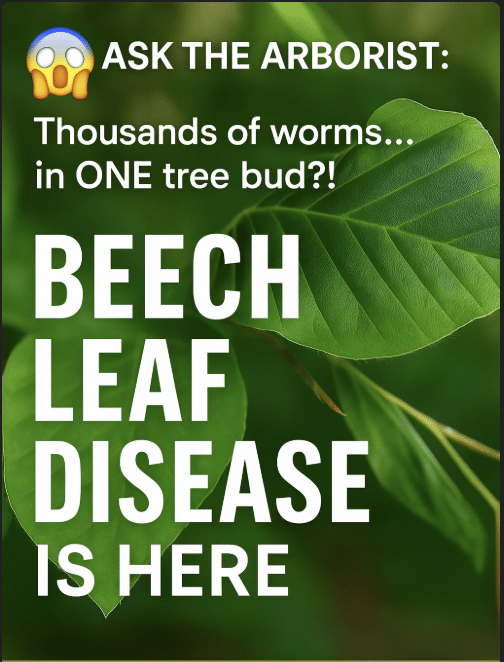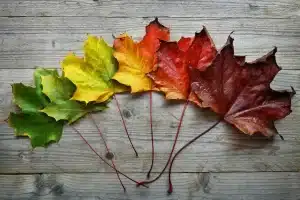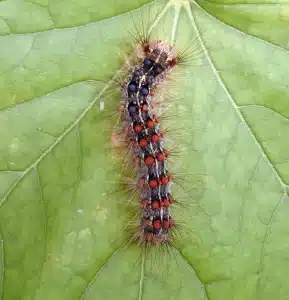Well, well, well, my tree-loving friends. It seems that every month I write about another pernicious pest invading our Pennsylvania and New York forests. This month is no different.
Meet the most recent plague upon our American beech trees — so new, in fact, that it doesn’t even have a common name: Litylenchus crenatae mccannii! This voracious villain is a type of nematode — a microscopic worm — that inhabits a single leaf bud by the thousands! Imagine that in every bud there’s a bustling city of these tiny, terrible tyrants, complete with their own highways, high-rises, and way too many relatives staying for the summer. These microscopic squatters didn’t just move in quietly; they brought thousands of friends and started eating everything in sight.
Unfortunately, Beech Leaf Disease (BLD) is now everywhere in Pennsylvania’s forests. If you walk in a state forest or along your own wooded property line, chances are you’ll spot it. Our native American beech — a keystone species that produces nuts for wildlife, shelters songbirds, and gives our forests that magical fairy-tale look — is under siege. The biggest problem? It’s usually fatal.
Here’s what it looks like: You’ll never see a nematode with the naked eye, but the damage is obvious. They feed between the leaf layers, leaving behind thickened, dark-green bands. These leaves eventually curl and die off. Within a few years, the leaves stop working altogether. The tree loses its energy, drops leaves early, and begins to starve.
Think of it as thousands of tiny vampires draining your tree’s energy — except they also have the nerve to redecorate while they’re at it.
They likely originated in Japan, where similar species live in harmony with local beeches. But here in North America, our beeches have no built-in defense. BLD was first noticed in Lake County, Ohio, in 2012. Since then, it has spread like gossip at a small-town diner — fast, unstoppable, and reaching every corner of the room. It probably hitched a ride on nursery stock, leaf litter, or just blew in on the wind. Apparently, no one checked their passports at the port.
Sadly, there’s no “spray it once and done” cure for BLD. But there are things you can do to protect high-value beech trees, especially in your yard:
1. Reduce stress. An already healthy tree will naturally be more resistant to pests and diseases. Mulch with decaying wood chips to keep the soil cool and moist. Water during hot, dry weeks, and for crying out loud, avoid compacting the soil.
2. Give medicine by applying phosphite soil drenches. Phosphites act like an immune boost for trees, helping them ramp up their natural defenses. Products like Dog‑Phite® and Agri‑Fos® can be applied a couple of times during the summer and have been shown to slow the spread.
3. Call an arborist for high‑value trees. The unfortunate reality is that most beech trees will die from BLD. But if you have a large beech you want to save, a certified applicator has access to “prescription‑strength” treatments that are more powerful than what you can buy at the store.
Beech Leaf Disease is like an uninvited party guest — it won’t leave on its own, and it will eat you out of house and home. But with a little intervention, you can keep it from stealing the silverware. Sadly, BLD won’t disappear overnight, but slowing it down buys time for research and for our beeches.
So take a walk, check your trees, and if you see those tell‑tale dark bands or crinkled leaves, call for help. Your beeches — and the forests they call home — are worth saving.
Mike White is an ISA Board Certified Master Arborist. If you have any tree related- or otherwise random- questions, he’s happy to help!




